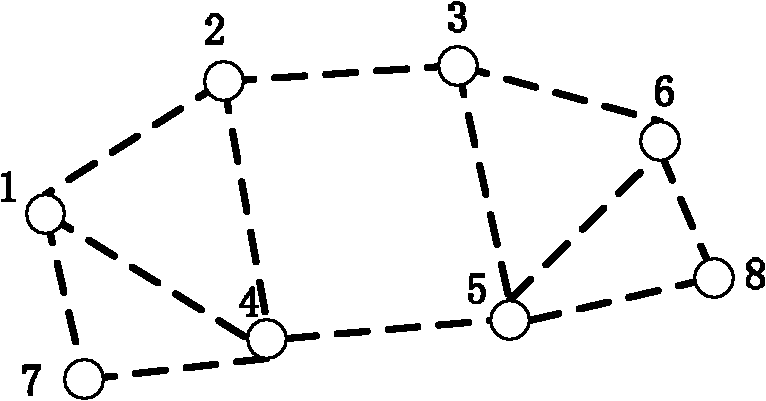A Channel Resource Allocation Method Based on Time Division Multiplexing
A technology of channel resource and allocation method, applied in the field of channel resource allocation based on time division multiplexing, can solve problems such as inflexibility and lack of consideration of differences in transmission data requirements.
- Summary
- Abstract
- Description
- Claims
- Application Information
AI Technical Summary
Problems solved by technology
Method used
Image
Examples
Embodiment Construction
[0057] For multi-hop networks with unequal nodes such as MESH networks, the existing STDMA time slot allocation technology does not take into account the differences of nodes, the service quality of nodes is not fair, and cannot be allocated on demand.
[0058] Suppose the network is hierarchical, such as Figure 4 shown. A multi-hop self-organizing network is formed between nodes. Different from ordinary multi-hop self-organizing network, the data of this network needs to be sent to or received from the external network through the egress gateway. In other words, data has a flow direction. From a node to a gateway is called uplink, and from a gateway to a node is called downlink. Therefore, although the nodes in the network are the same in terms of equipment, their tasks are very different due to their different positions from the egress gateway. In this network, in addition to sending its own data, nodes also need to forward the data of other nodes. Nodes that are close...
PUM
 Login to View More
Login to View More Abstract
Description
Claims
Application Information
 Login to View More
Login to View More - R&D
- Intellectual Property
- Life Sciences
- Materials
- Tech Scout
- Unparalleled Data Quality
- Higher Quality Content
- 60% Fewer Hallucinations
Browse by: Latest US Patents, China's latest patents, Technical Efficacy Thesaurus, Application Domain, Technology Topic, Popular Technical Reports.
© 2025 PatSnap. All rights reserved.Legal|Privacy policy|Modern Slavery Act Transparency Statement|Sitemap|About US| Contact US: help@patsnap.com



